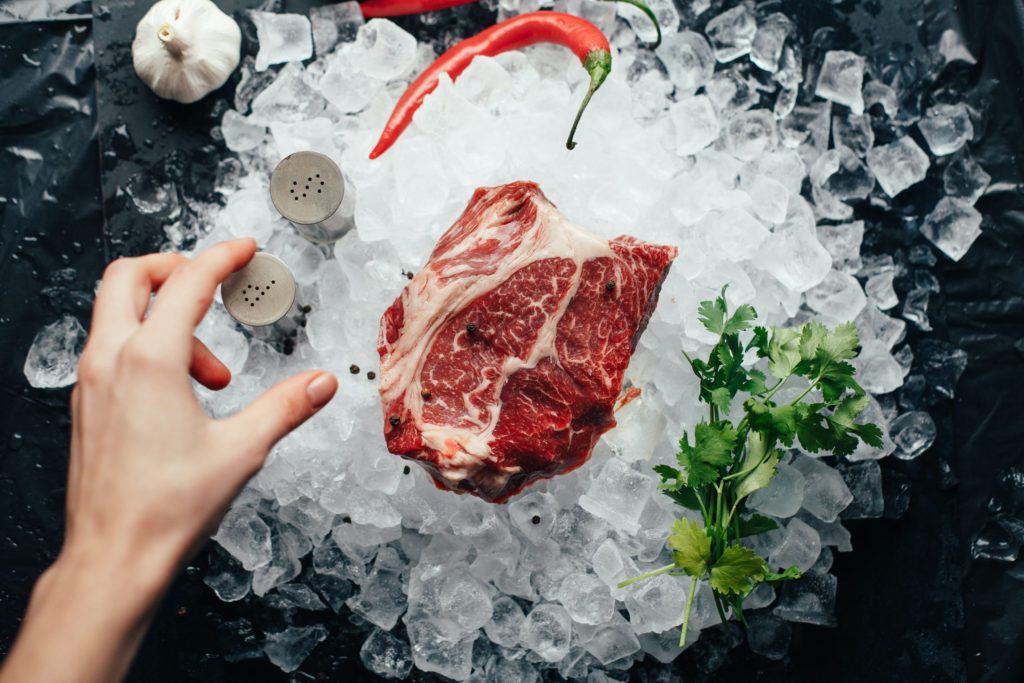When it comes to beef, chefs agree: the priciest cuts of meat are often way overrated. Choice cuts like tenderloin, filet mignon, and ribeye are popular and easy to cook, so that’s what grocery stores usually keep in stock when meat plants are up and running and there isn’t a global pandemic.
But in these tough times, tender cuts can be kind of rare. So carnivores who want to keep their families fed will want to elevate their meat game by learning to cook the kinds of tough or otherwise “undesirable” cuts that ranchers, farmers, and professional chefs have long prized for their flavor and value.
Cooking those unfamiliar cuts can be scary for first-timers, but we’re here to recommend some tools that can help. (And when in doubt, there’s always a roast.)
What’s an ‘undesirable cut?’
Let’s think about the meat-eating public’s love for tenderloin, for a second. If every cow has just two tenderloins, and you want to buy six tenderloins, how many cows have to be slaughtered and processed? Do a few calculations like this on the other cuts, and the higher prices and rationing we’re seeing start to make sense.
The ‘undesirable’ cuts of meat are the ones that make up the rest of the animal. They’re not undesirable because they’re bad, however. They’re just less familiar. To butchers and farmers, in fact, those cuts are the ones they most hope you’ll buy and fall in love with. Those cuts mean less waste.
Beef cuts to try
Look for these the next time you go to the store or place an order for delivery. If you go to a butcher instead of a grocery store, you’ll have the advantage of chatting with the person who’s made the cuts. They can make specific recommendations to fit your family’s tastes and cooking style.
Here are the cuts of beef we look for:
- Tri-tip
- Flat iron
- Chuck steak
- Teres major (sometimes called petit tender or faux filet)
- Beef shank
- Merlot steak
- Beef tongue
- Oxtail
Pork cuts to try
Skip the pork chops! There’s so much more to a pig than pork chops and ribs. Here’s what we look for:
- Pork top sirloin steak
- Collars (sometimes called coppa)
- Brisket
- Skirt steak
- Boston butt
- Pork shoulder
- Pig’s feet
If you go to a butcher or have a farm share, the experts will be able to tell you how they prepare these cheaper cuts. But even if you’re flying solo, cooking these cuts doesn’t have to be scary. If you have a cast iron skillet around, keep it on hand for the steaks. A grill works, too. And for all of these cuts, marinades are your friend.
Cook like an expert (without hours of study)
If you wanted to, you could dive into the world of butchery and become a true expert. But most of us are just trying to get food on the table that tastes pretty good. The big trick is to know where to spend your money. This is how we think of it:
- Whenever you can, get meat from a butcher or farmer…
- … but don’t just go for the familiar cuts! Ask questions and save money by getting underrated cuts. (A lot of ranchers who sell directly to consumers make the choice for you. You buy a part of the cow, and they butcher and process and get it to you!)
- Invest in the right tools to make your food as delicious and easy-to-cook as possible.
The Sous-Vide
This tool is a chef’s best friend, and it could be your best friend, too. It’s worth the investment, we promise, and despite its French name, it’s not hard to use. In fact, it might be the easiest cooking method we’ve ever tried.
A sous-vide is basically immersion cooking. First, you vacuum seal your meat with a little marinade or do a simple dry rub. (That’s where the word vide comes from—it’s French for ‘empty.) No need to buy a vacuum sealer, though. Chefs and food safety experts agree that a high quality Ziploc is just as good. The advantage of the vacuum seal is that it helps the meat stay underwater while it cooks. So if you decide to go that route, many retailers have bags and sealers available cheaply.
Then, you fill a tub with water and put the vacuum sealed meat inside. The sous-vide tool comes in here. You attach it to the tub and it heats the water and meat to a precise temperature. (Sous is French for under, like underwater.)

Best for most:
Anova Culinary Sous Vide

Upgrade:
Breville Joule Sous Vide
Those of us at The Prepared who use sous-vide immersion cookers for our meat are using them all the time right now. We keep meat in our freezers, already vacuum sealed or packed in Ziplocs with minimal air. That way, it’s ready to sous-vide with minimal fuss.
That’s in part because if we’re getting meat from the store and freezing it for a while, we’re not convinced it’s the freshest meat in the world. So we tend to use the sous-vide for a few hours (heating the water to 130-145 degrees Fahrenheit). We dry our cooked meat off and then pop it on the grill or in a hot cast iron skillet.
One advantage of using the sous-vide is that it’s super safe. When you cook something for a few hours at 130 degrees fahrenheit, that kills harmful bacteria and effectively pasteurizes the meat. A quick sear will kill any remaining bacteria without overcooking the meat. So you get the most delicious, safest meat possible.
The Cast Iron
If you don’t have access to a grill, a cast iron skillet is your best bet for cooking these tougher cuts of meat. It’s pretty simple, too. If you don’t want to mess with a sous-vide, marinate your meat in a Ziploc bag in the fridge overnight. Be sure to season it with enough salt!
A note for whatever way you choose to cook, if you marinate your meat, pat it dry when it comes out of the bag or bowl! If there is any water on the meat, the maillard reaction won’t happen when you cook it on high heat. A ‘maillard reaction’ is what we call it when you’re able to get a nice crust or sear on the meat. Meat with water on the surface will just be brown and be boring. The maillard is what gives meat that awesome seared flavor.
Heat your cast iron on high before you take your meat out of the refrigerator. When a few drops of water pop and steam on the skillet, it’s time to cook. A tri-tip, flat iron, or hanger steak will cook quickly and beautifully on the skillet like this. Cut it against the grain and you’re ready for tacos or a rice bowl.
The Roast
When in doubt, roast or braise your meat! Most people have all the tools for this at home. Make a dry rub of spices or marinate your meat overnight in the fridge. Then, brown the meat on high heat on the stove. Use a cast iron for this if you have one, or another pan will work just fine. Then, in a tightly covered pan or roasting dish, cook the meat in a small amount of liquid–wine, broth, or stock until tender.
The first browning cooks off any bacteria like a sous-vide would. Then, the low, slow cook time with liquid makes the meat super tender, so even tough cuts cut easily. Add some vegetables toward the end of your braise or roast and you’ll have a full meal.



You are reporting the comment """ by on